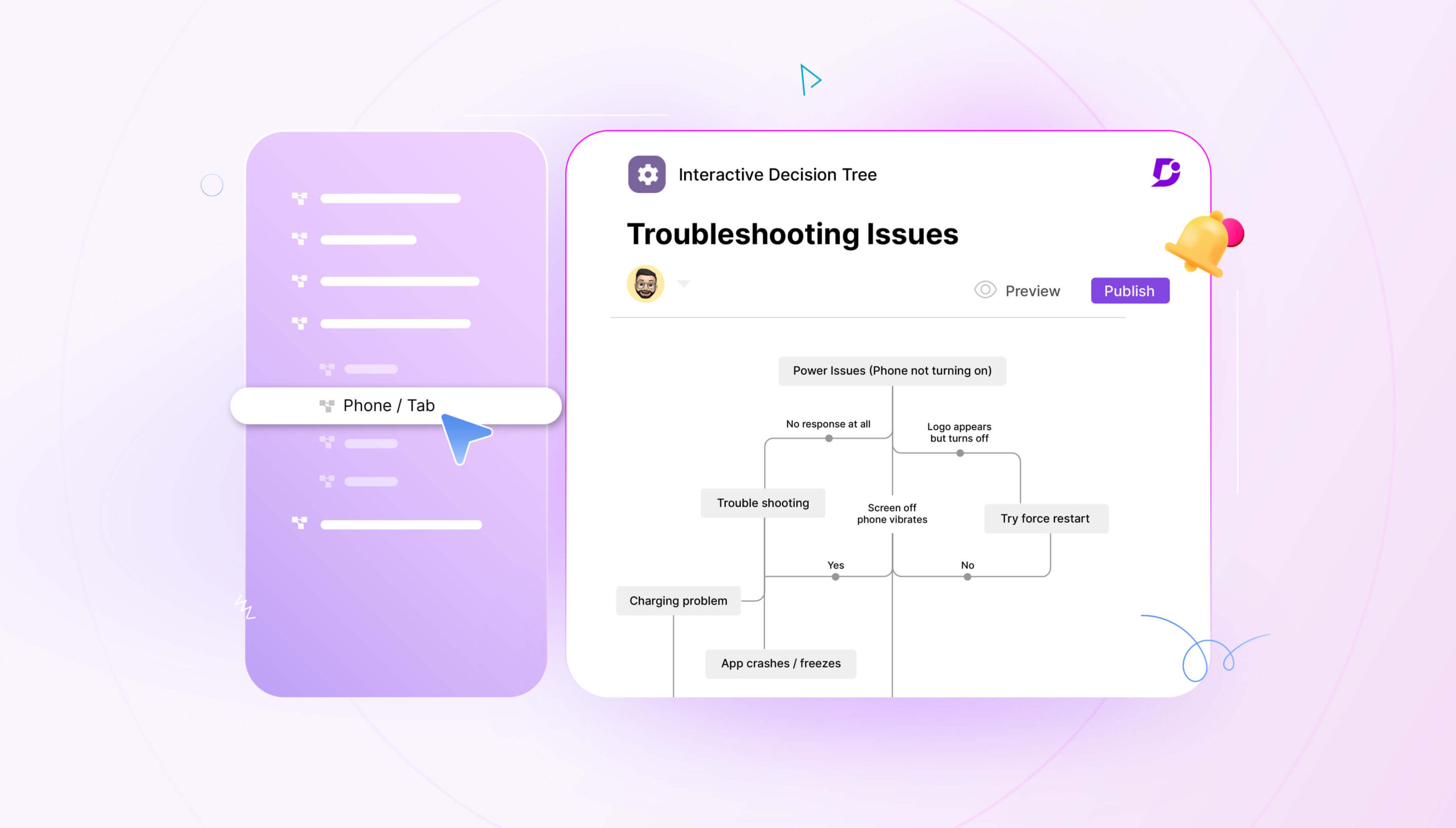The COVID-19 pandemic has taken us by unpleasant surprise, affecting our lifestyle business conditions, and the Workplace. For companies it is a war game, competitive intelligence can save you from the fall.
In our case, our entire team (around 100 people) was shifted to remote working completely. I’m assuming probably a lot of you are getting used to working from home (WFH) and remote.
In situations like this, the effectiveness and efficiency of how you run your day-to-day operations come down to the tools you are using to run your business. Being a tech company we are early adopters of a lot of modern tools. For example, we switched from emails to Microsoft Teams at the beginning of 2018, i.e. nearly 2 years ago. Over the years, our processes and usage of Microsoft Teams improved and the whole team is fully accustomed to remote collaboration.
This may not be the case for a lot of organizations. I’m seeing a lot of companies switching to modern tools like Slack, Microsoft Teams, Zoom, WebEx, etc overnight and struggling to cope with training their employees on a new toolset.
I wanted to explain how Document360 as a knowledge management tool can help companies cope with these challenging times of working remotely (WFH).
What are the main challenges?
One of the biggest challenges companies face is the key information like processes, procedures, and policies that are not kept in a central location and are not accessible to all employees.
Examples:
- Standard operating procedures
- Business Continuity Plan (BCP)
- Laptop usage policy when taking it outside work
- Customer refund policy
- Sales playbook
- Marketing playbook
- Business playbook
- Sick leave policy
- Tools usage guide/procedures (ex: Slack, Microsoft Teams, Zoom etc)
The list is very long, the above is just a sample.
Different teams/departments use different tools to maintain this information. In some cases, it may be residing in Microsoft Word documents either on their laptops/desktops and they share it in emails when required.
In some cases, it may be in places like Google Docs, SharePoint, internal Wiki, etc not well structured, multiple versions floating around, and people struggling to find the right document and not always 100% sure whether they are reading the latest document.
People don’t think too much or get away from these challenges when they are all working under the same roof and easily can walk up to someone and ask for the required information. But once you go remote, this becomes a major bottleneck and lost productivity.
How Document360 can help
At the core, Document360 can help customers with two main use cases. You can use Document360 to build
- Public facing online knowledge bases (and/or)
- Private internal knowledge bases
Public facing Knowledge base
During these challenging times when we are trying to cope with the well-being and safety of our employees, it’s also essential to support our customers promptly. A lack of support might affect our customers (and in turn their customers) inadvertently and will have a ripple effect on everyone.
We have been constantly encouraging companies to improve their product documentation and try to encourage their customers/users to get support via self-serve channels as much as possible. This is efficient, quicker, and saves money by reducing support calls.
Larger companies like Microsoft and Google have done this very efficiently. For example, if there is a problem on your phone or laptop or any of the services offered by Google like Google Docs, Gmail, etc. you don’t send a support request or call Google or Microsoft, instead, you try to find the answers via their documentation or from someone’s blog or community forums.
Why don’t we adopt the same principles inside of our business? This will help in the long run to reduce support costs and increase the speed of support.
Some of our customers have done this extremely well. Below are the knowledge base sites built by our customers using Document360
The main advantage of using Document360 for building a self-service knowledge base is you don’t need to worry about anything other than writing great content.
The platform takes care of providing a great tool for you to create/manage categories, writing and publish articles, version control, backup/restore, customize the look and feel, configure a custom domain, online hosting infrastructure, security (SSL) and so on.
Private Internal Knowledge base
As I mentioned in the beginning, the second biggest challenge we are facing right now is the scattered internal company knowledge.
I’ll add one more common scenario. It’s typical in organizations, that you do not look into what knowledge an employee holds until it reaches a point where they are leaving the organization, and all of a sudden we request them to document everything. It’s natural when someone decides to leave, their affinity towards the organization is going to be at the lowest level and you are going to only get the basic. It’s better to build a culture where processes and procedures are continuously documented and available to everyone.
Document360 comes with a whole array of features to build your internal knowledge bases. Let’s take a look at some of them
Private setting and powerful Readers Management
With a flick of a button, you can convert your knowledge base into a complete private knowledge base making it secure. To access the content, your internal employees need to log in to the knowledge base first.
You can add your employees to the knowledge base in multiple ways, either one by one using the portal settings, bulk importing them from a CSV file, or even enabling self-registration of readers with domain restrictions. Ex: only users with the @yourcompany.com email address can join the project.
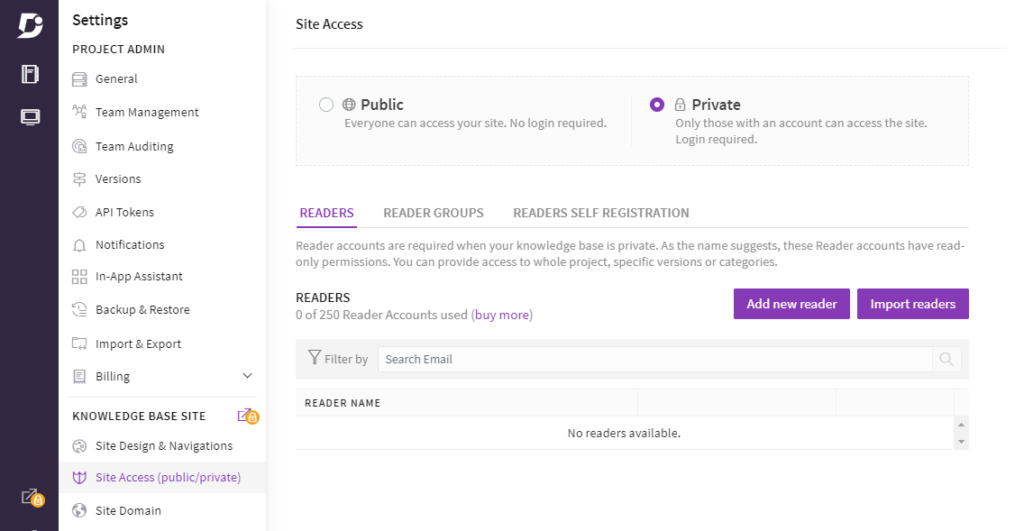
Separate portal for Readers
Readers are your typical users who do not contribute the content but only consume it. For example. Your employee handbook would have been written by one or two people in your HR department but consumed (Readers) by 100’s employees in the organization. In this case, there is a separate portal for the content producers (HR team) and content consumers – Employees (Readers).
The reason for this separation is to keep the Reader portal simple, focused purely on the content. How quickly you can access them via either category navigation or search
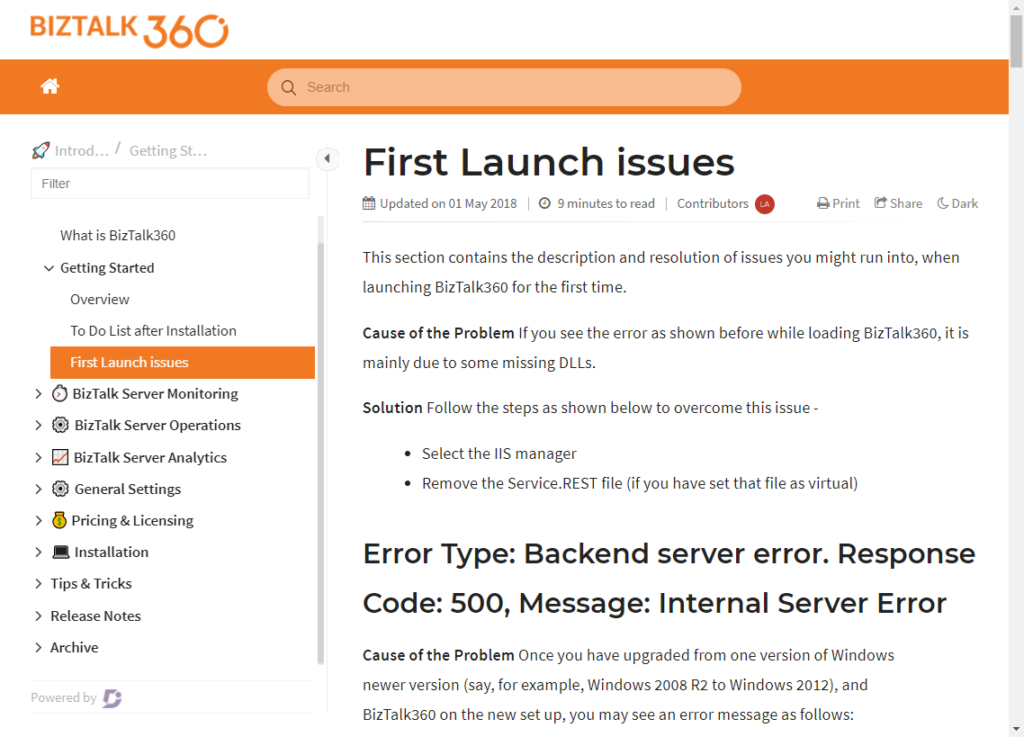
Security at category level
Document360 comes with advanced security access at multiple levels to cover all of your scenarios. You can provide access to your Readers at different levels, for example: at the complete project level, or specific categories level.
Let’s take an example. You have an employee handbook project with various categories (folders) mainly maintained by the HR department. Some of the common folders and access will look like as shown below.
|
Folders |
Content |
Access |
|
New joiners, leaver procedures |
HR and Recruitment team |
|
|
General operations |
Sick leave policy, WFH policy, Assets handling (like laptops, mobile phones), Security Card reader access, etc |
All employees |
|
Payroll processing |
Payroll process-related documents, calculating monthly holidays, cut-off date, submission checklist etc. |
HR – Payroll processing staff |
|
Vendor management |
Vendor details, Vendor payment processing procedures |
Finance staff |
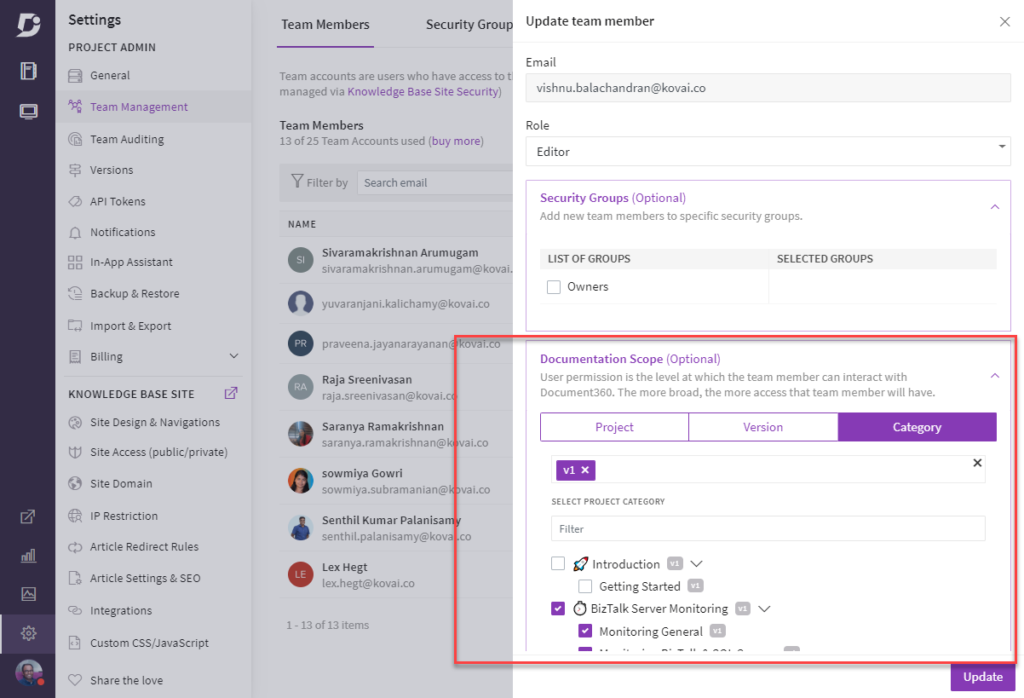
Powerful Search
One of the biggest challenges I highlighted, in the beginning, is the lost information across the organization in various forms and employees are not able to access them in a central location. Once you consolidate all your process and procedure documents in a central location using Document360, then your employees can access them seamlessly with Document360’s powerful AI-based real-time search.
Despite the volume of articles you have in the knowledge base the AI search engine will be able to retrieve relevant results in a fraction of milliseconds.
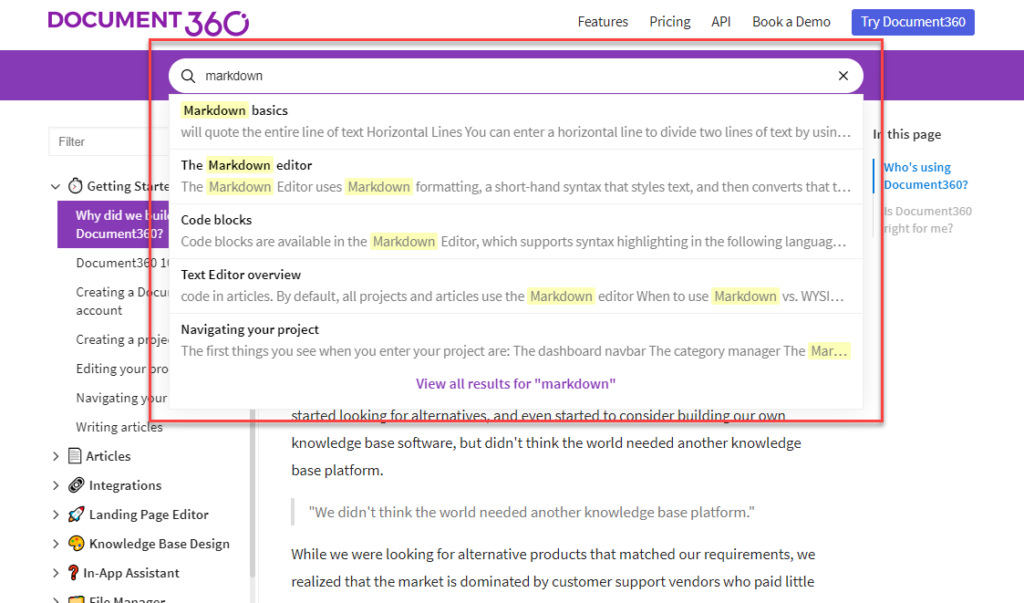
Team analytics
The team analytics features give some important metrics at the individual employee level. Some of the key metrics include articles contributed, popular articles, last contributed, last login, and so on giving valuable insights about the knowledge base and how it’s been utilized.
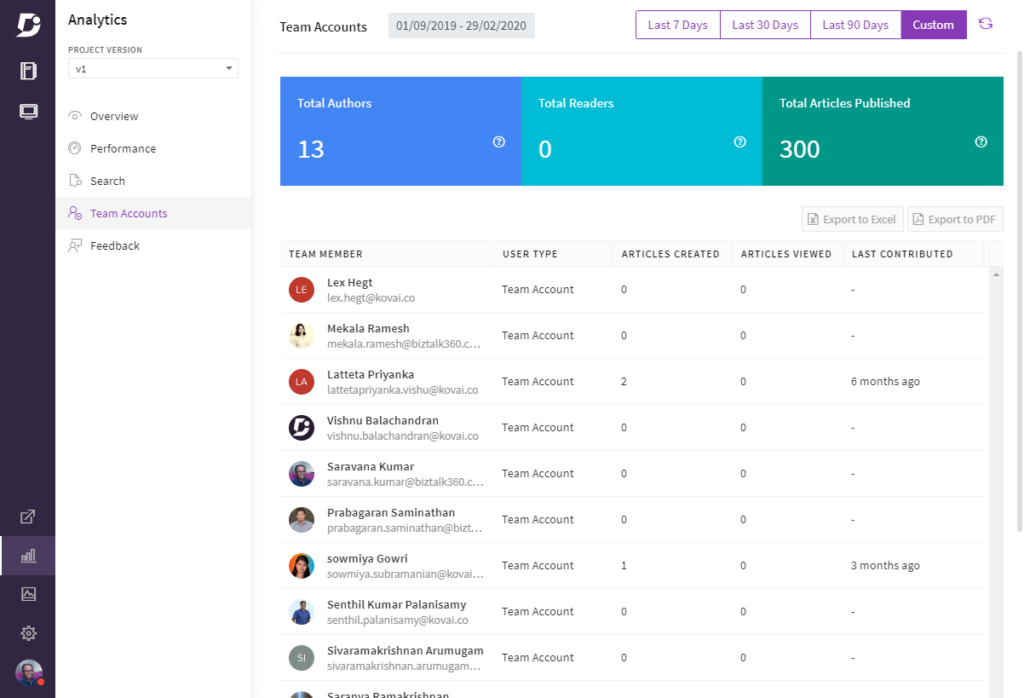
Search Analytics
Search analytics is another important metric to maintain a healthy internal knowledge base. It shows the keywords that are frequently searched by your employees, whether they can find the articles in your knowledge base, how frequently certain search keywords are used, and so on. The contributors (editors) can have a monthly or quarterly audit and constantly improve your internal knowledge base.
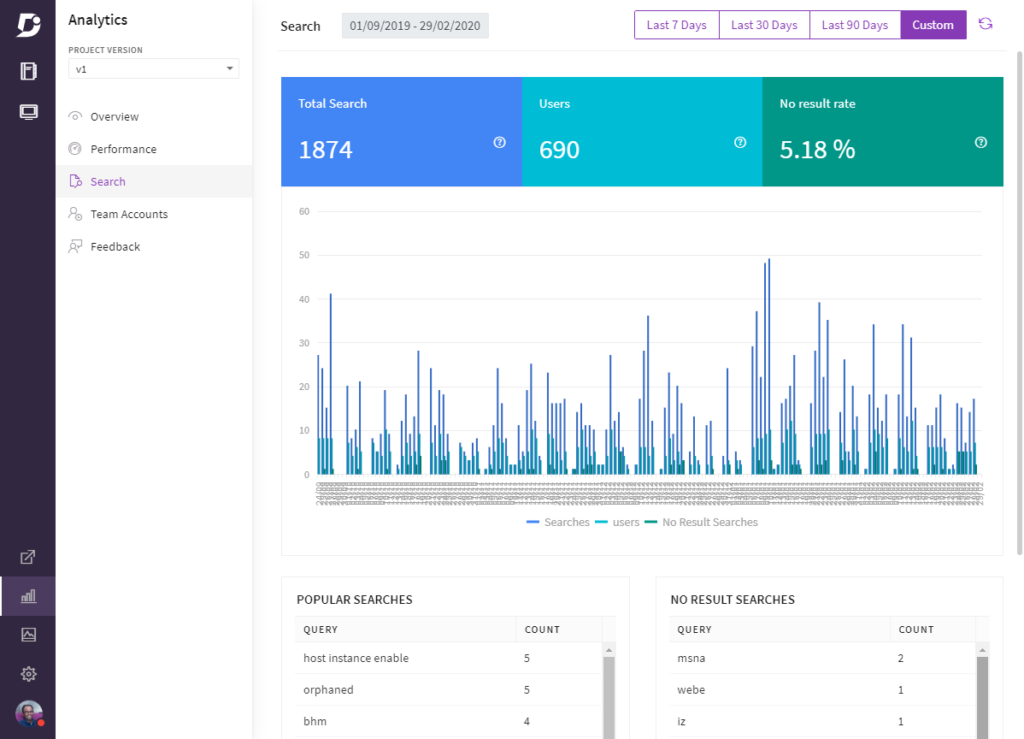
User Feedback
Document360 also comes with the potential for the user to give feedback on each article. They can simply say whether they like or don’t like a specific article. If in case they don’t like an article, they can provide additional feedback at the article level
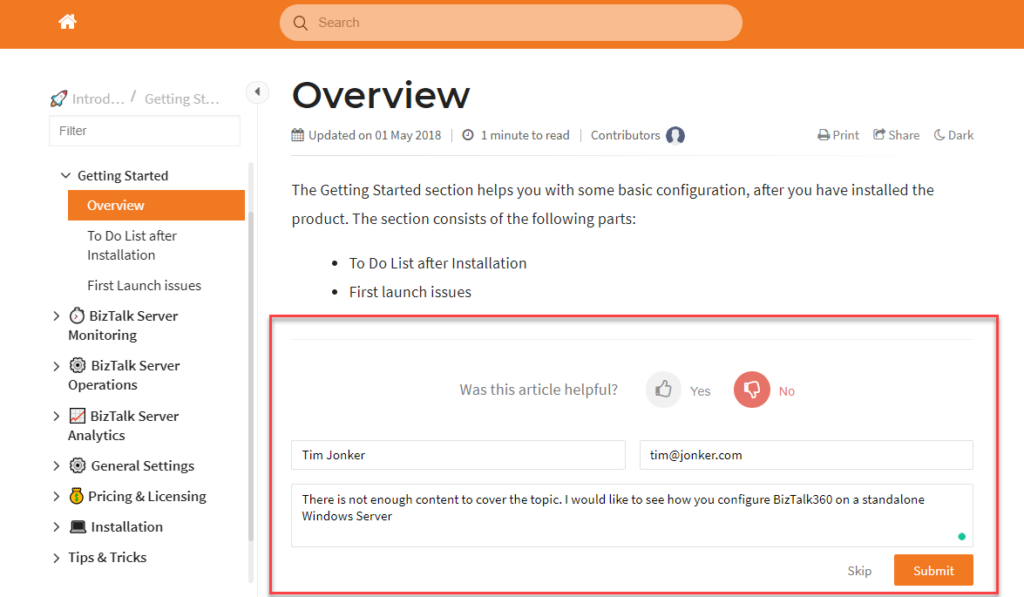
The content producers (editors) can view all the feedback on the analytics side and take appropriate actions (they will also receive an email notification)

Can I not use Google Docs or Microsoft SharePoint for this purpose?
To some extent, you can use either Google Docs or Microsoft SharePoint to achieve a centralized knowledge repository for your internal employees, but these tools are not designed for this purpose. They are more of standalone documents built collaboratively. They miss some of the key features I highlighted above.
Personally, if I’m in a decision-making situation and picking up the tools for the above-mentioned reasons, I would rather pay $50-$100/month and use the tool that’s well designed for this specific purpose, eventually saying a lot of productivity hours, seamless access for all of my employees. Document360 is affordable and it’s in this price range for the majority of businesses.
What are your next steps?
If you do not have a good product knowledge base for your customers, then create one with valuable content so your customers and end-users can support themselves using the self-service knowledge base built using Document360.
Also read: Employee intranet: Why does it matter to your employees?
If your company knowledge is spread across everywhere and you do not have a centralized place for policies and procedures, then create a private knowledge base using Document360.





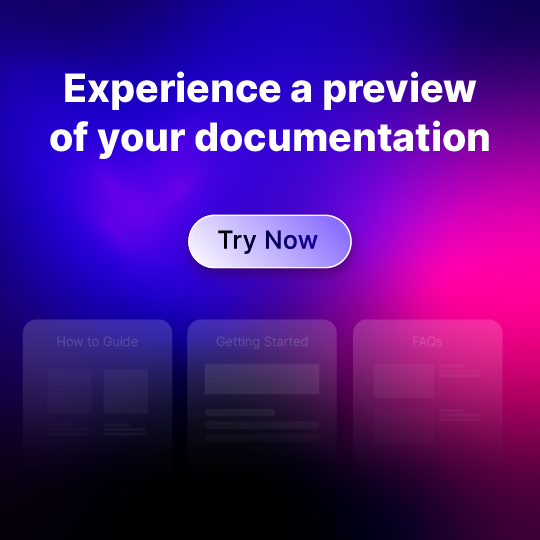
 –
– 

